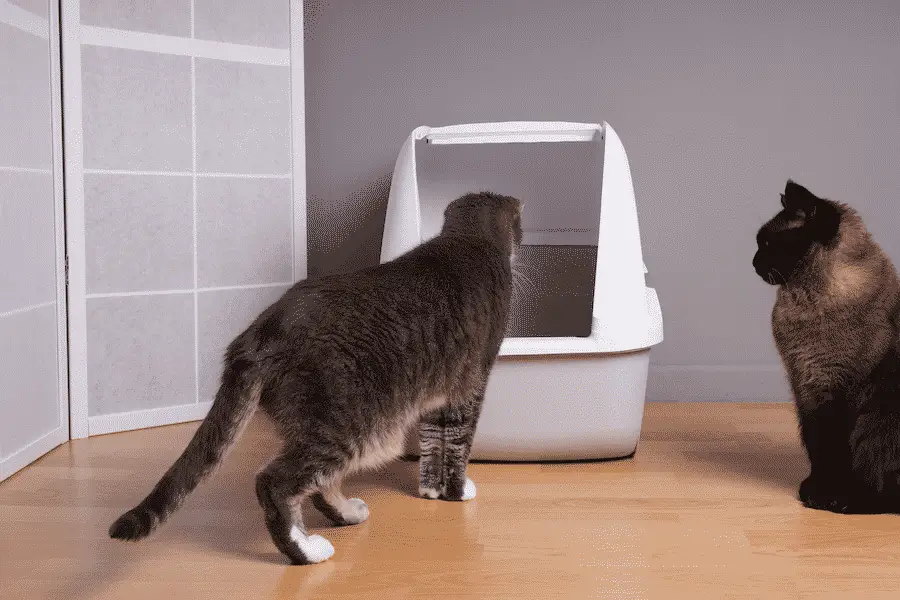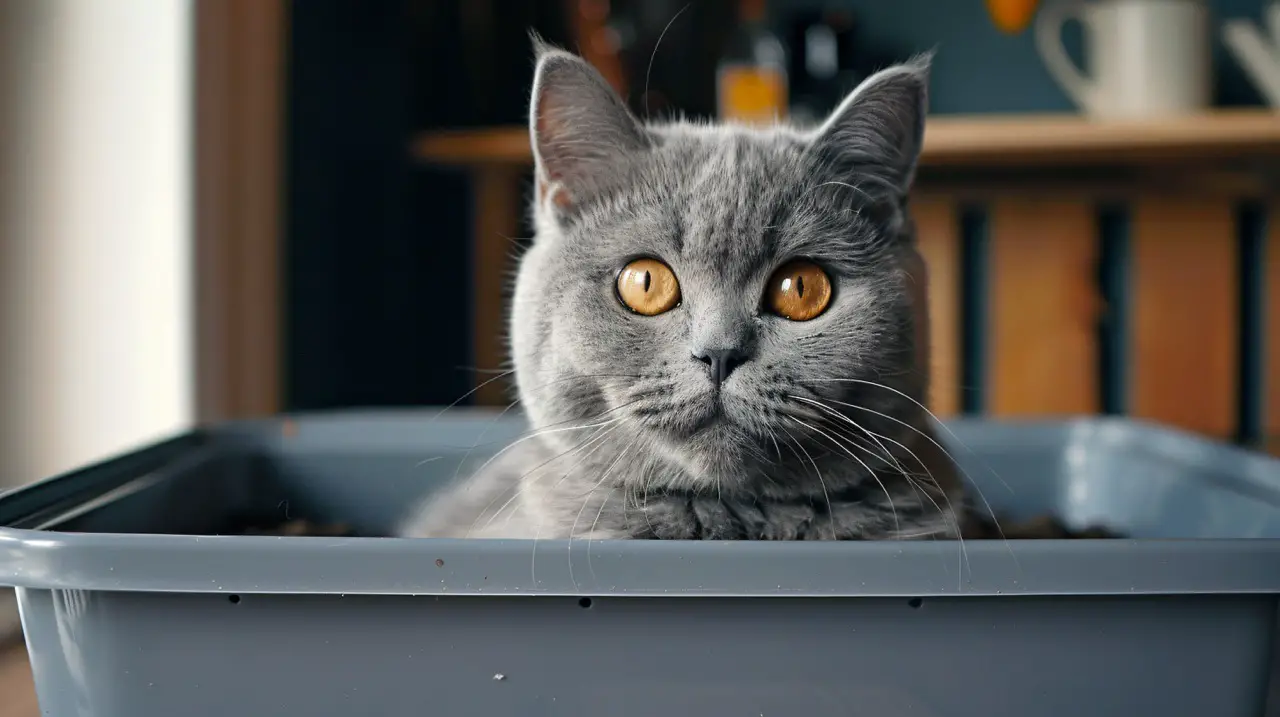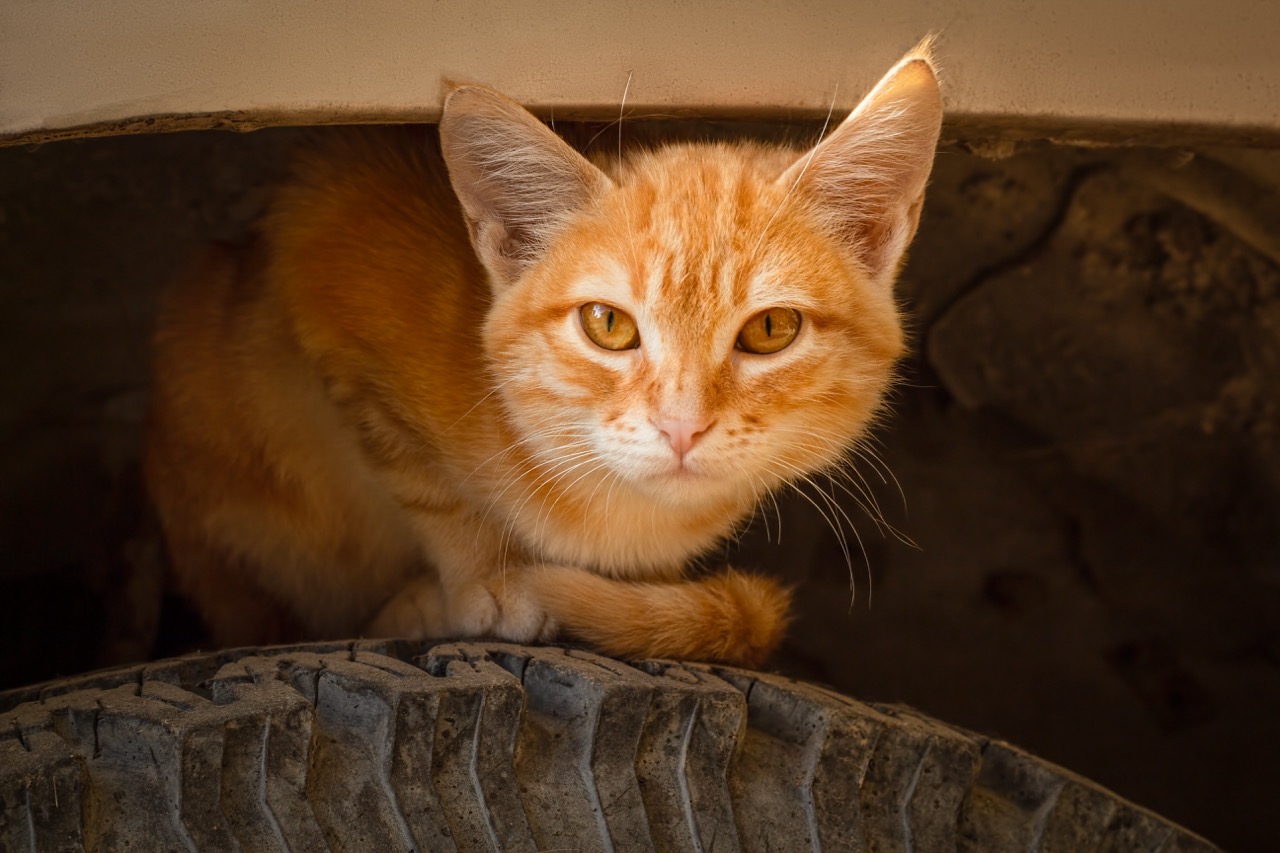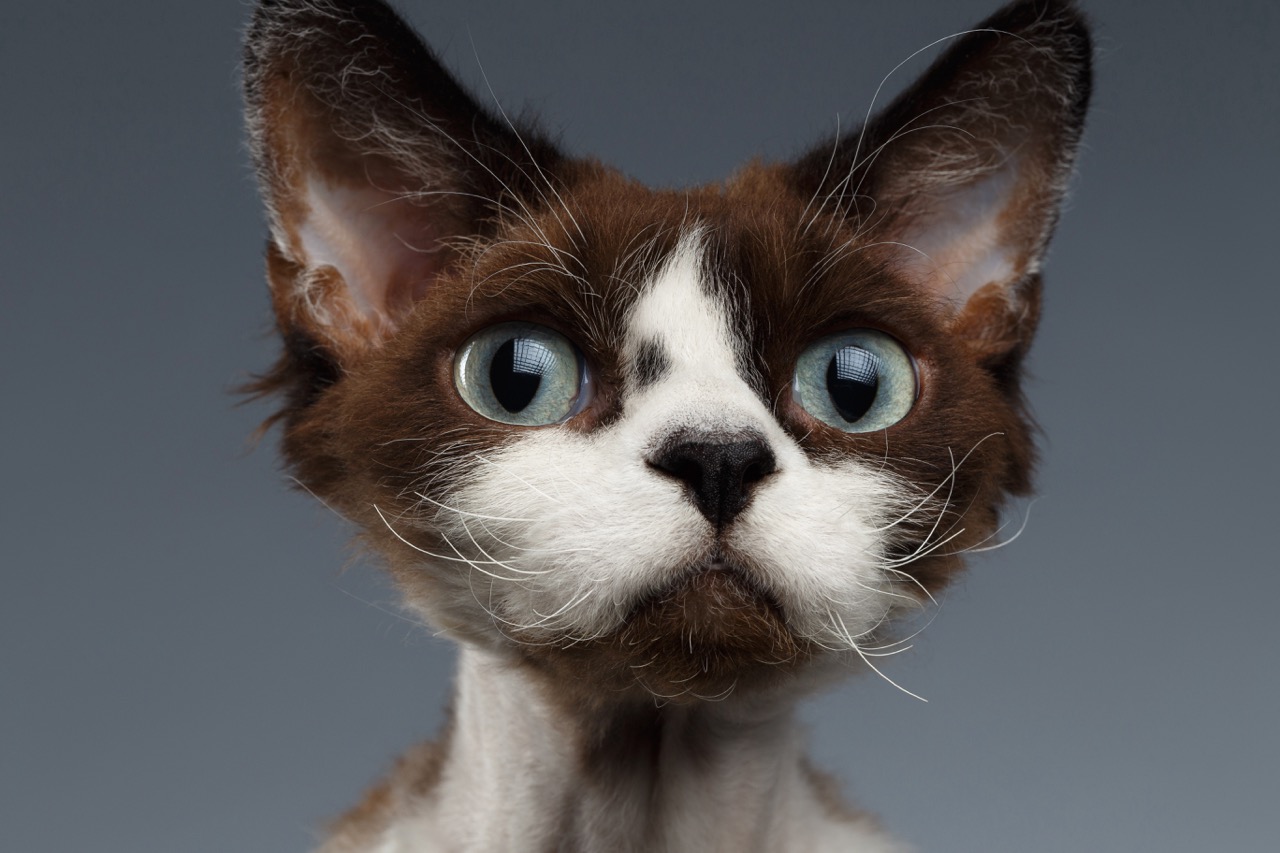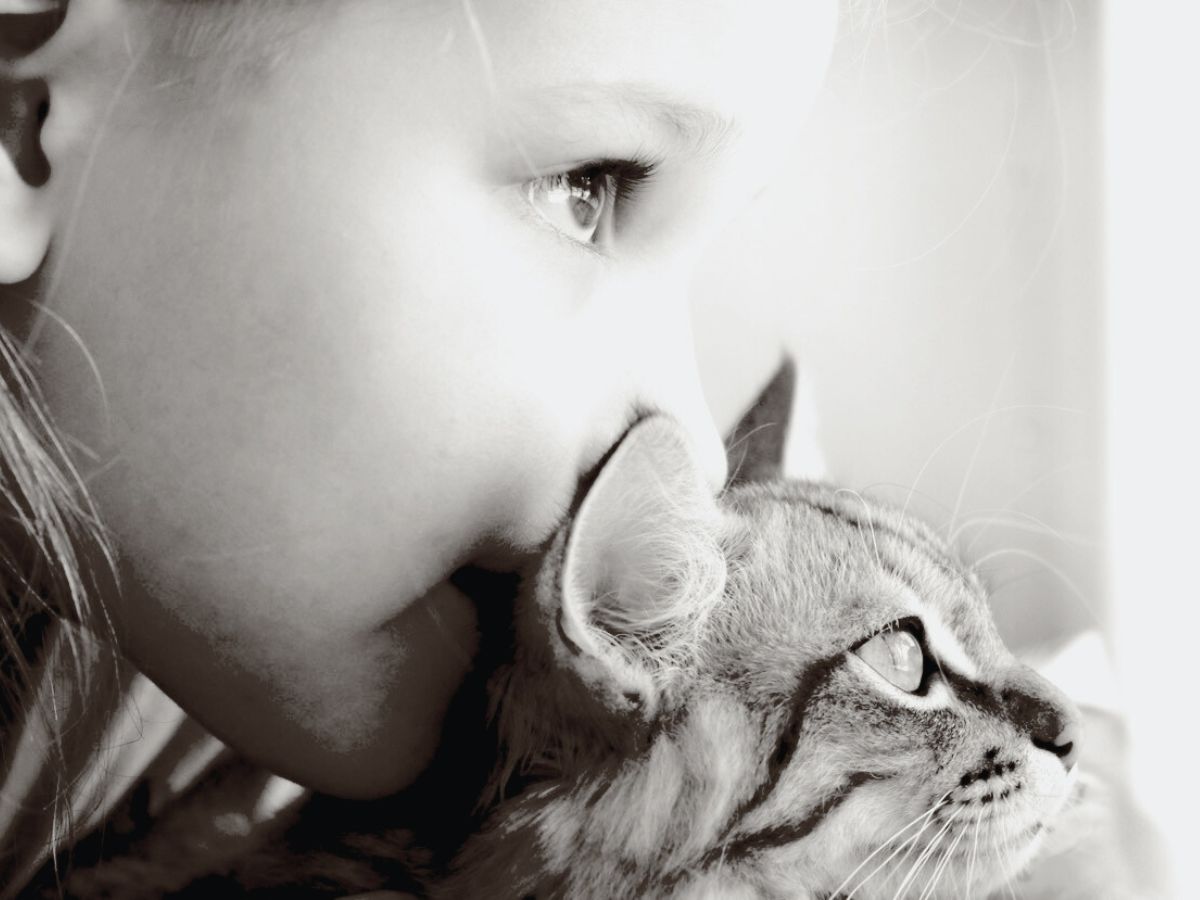Medical Issues That May Cause Your Cat To Pee Outside The Litter Box
Urinary Tract Infections In Cats
Urinary Tract Infections (UTI’s) can be very painful and lead your cat to associate pain with using the litter box. A UTI can be diagnosed by your vet, usually through a urine sample. Bacteria can cause an infection that can be resolved with antibiotics.
Metabolic Diseases Can Cause Your Cat To Stop Using The Litter Box
If your cat has a diagnosed metabolic disease such as kidney disease, diabetes, liver disease, or thyroid disease, you may notice that they are urinating more often or the volume of urine is increased. It’s important to stay on top of these diseases to keep your cat optimally healthy and avoid secondary behavioral issues. Any time you notice a change in litter box contents or habits, be sure to take your cat to the vet to stay on top of any potential issues.
Bladder Stones or Kidney Stones
If your cat has stopped using the litter box, a bladder stone or kidney stone could be the culprit and s/he may be in pain. Your veterinarian can diagnose stones through an X-ray and determine how many stones your cat has, as well as the size of the stones. Larger stones usually have to be removed surgically. If your cat has bladder or kidney stones, they may also have a urinary tract infection which can be diagnosed through examination of a urine sample. Antibiotics are usually required.
Idiopathic Cystitis (Inflammation of the Bladder)
Idiopathic cystitis is an inflammation of your cat’s bladder that is of “unknown origin.” This means that after having your cat checked for a UTI, metabolic diseases, and stones, there isn’t a clear cause. Your cat may be experiencing cystitis due to environmental factors. As a result, your vet may recommend changing your cat’s diet and exercise routine to see if your cat responds well.
FLUTD (Feline Lower Urinary Tract Disease)
Lower urinary tract disease is the number one cause of cat visits to the veterinarian. According to Cornell’s Feline Health Center – look out for the following clinical signs:
- Difficult or painful urination
- Increased frequency of urination
- Crying out while urinating
- Blood in the urine
- Inappropriate urination (that is, outside of the litter box)
- Frequent licking of the genital region.
The Bottom Line: Take your cat to your vet when you notice any sort of change in litter box behavior. Your cat has no other way to communicate with you when they aren’t feeling well, so peeing outside of the box can be their way of telling you this. Don’t hesitate and call your vet immediately. Urinary/bladder diseases can be very painful.
Behavioral or Environmental Factors That May Cause Your Cat To Urinate Outside Of The Litter Box
Type of Litter
If you changed the type of litter you normally use, it could be upsetting and unsettling to your cat. Cats are very sensitive to odors, textures, dust, etc. Cat litters are available in a variety of textures from clay “sand” to litter “pebbles” and wood, corn, coconut, walnut shells, crystals and more. Many varieties of litter are scented as well. Most cats prefer unscented litter because their noses are much more sensitive that ours. So a scented litter might smell pleasant to you, but be unbearably scented to them. Try going back to your previous litter and see if your cat comes back to the box.
Dirty Litter Box
Cats are known for their cleanliness – and that includes the litter box. You should be cleaning your cat’s litter box every single day. In our home, we clean the litter boxes two to three times a day. Set yourself up for success and make the job of cleaning the litter box as quick and easy as possible so that you develop a regular cleaning routine. Imagine how you would feel if you went to use a bathroom and the previous person had not flushed. It’s gross and off-putting. Your cat feels the same way.
Litter Box Location
Make sure your cat’s litter box is in a quiet, secluded location that allows for privacy. Cats do not want to use a litter box in a high traffic area where people or other animals are coming and going. If your cat doesn’t feel safe where the litter box is located, they may choose a location in your home that feels safer to them. The inappropriate location where you cat is peeing may be unacceptable to you, but it feels more appropriate to your cat for some reason.
Number of Litter Boxes
Be sure that you have enough litter boxes in your home. The rule of thumb is to have one litter box for each cat plus one. So if you have three cats, you should have four litter boxes.
Types of Litter Boxes
Consider the type of litter box your cat is using and if you’ve changed their box at all. Consider the following:
- Size of Box – If your have a large cat and small litter box, your cat may be trying to use the box, but may be missing the target because they simply do not fit. Get a larger box for larger cats.
- Covered vs. Uncovered
- Covered litter boxes may be more appealing to you as the cat owner, but cats tend to prefer uncovered boxes so that they don’t feel trapped and also because the odor in a covered litter box is going to be much stronger.
- Uncovered litter boxes may be less appealing to your cat if they’re already accustomed to a covered box and prefer the privacy it offers.
- Short vs. Tall – Again, this is a feline preference. Try both high-sided and low-sided boxes. Boxes with cut-out holes may not be appealing to your cat.
- Automatic Self-Cleaning Litter Boxes – Automated litter boxes may be really cool to you, but your cat may find the shape, size or noise intimidating. Provide a traditional alternative and never switch your cat’s litter box abruptly. Cats need a long time to adjust to new items – especially litter boxes.
- Bottom Line – Any time you change anything about your cat’s litter box, be sure you keep your cat’s old type of litter box before switching over to a new style, design, size, etc. It may not seem like a big deal to you, but it can be a very big deal to your cat.
Old Urine Odors
Cat urine is notoriously difficult to get rid of. Be sure that you use an odor destroyer that contains enzymes that will eat away at the root cause of the odor. Remember that cats have an extraordinary sense of smell, so while you may not smell the urine, your cat will. That’s why it’s so important to destroy any old odors. Use a black light to find old urine stains – they will glow under the back light.
Other Stressors
Cats can express stress by peeing outside of the litter box. Things that might stress your cat out include (but are not limited to):
- Moving – If you’ve moved recently, your cat may need some time and help adjusting to the new environment.
- Other Pets – If you have other cats or pets in the home, there may be a conflict you’re unaware of. Cats will exhibit territorial behavior, like peeing, to mark territory. If you added a pet or have a cat that is aggressive (or passively aggressive), consult your vet and cat behaviorist.
- Remodeling/Construction – Any disruption to your cat’s habitat/home can stress your cat out causing them to urinate outside of the box.
- Routine Disruption – If your routine has changed, your cat may be upset at the disruption. Do what you can to return to your normal/regular schedule.
Don’t punish your cat. It will only serve to confuse your cat and make them fear you. This will only exacerbate the issue. Be sure you’re doing everything you can to provide a clean, safe and healthy environment for your cat. If all else fails, you can try lining a separate litter box with puppy pads. Some cats just don’t like the feel of kitty litter under their paws, especially if they have been declawed. Many cats that refused to use the litter box began using it when they had the option to pee on a soft pee-pad inside a litter box. A separate litter box with litter is still maintained when the cat wants to poo…
Finally – be patient – your cat doesn’t speak your language, so you have to be a bit of a detective. It can be so frustrating and hard when your cat isn’t using the litter box, but the good news is that there are a lot of things you can try to get back on track.
Note: This post is not intended to be a substitute for veterinary advice. Please seek the advice of your licensed veterinarian for any and all concerns about your cat.
Myth
This is a myth and is absolutely FALSE. Cats do not seek revenge. People who claim this are projecting their own human feelings on their cat. “
